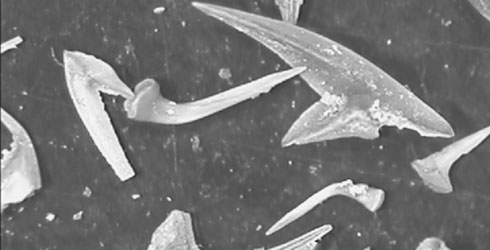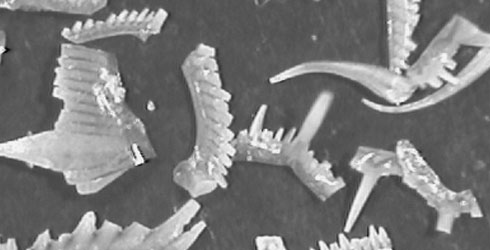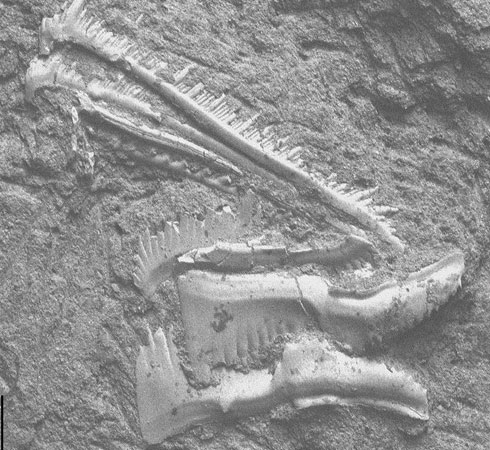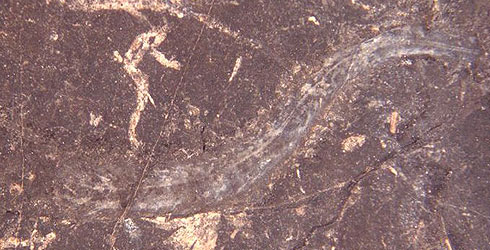Clydagnathus cavusformis
Clydagnathus cavusformis is 1 of a group of fossils that have an important place within palaeontology as they are used within biostratigraphy.
Biostratigraphy is a means of correlating and assigning relative ages to sediments based on the fossils they contain. Conodonts including Clydagnathus cavusformis are ideal for this purpose as they:
- are widespread
- are easy to identify
- evolved relatively quickly
Clydagnathus is known from the Carboniferous of Europe, Africa, Asia, Australia, New Zealand, North and South America, and is used to correlate strata of the same age from these continents.
Condonts appear in the fossil record during the Cambrian period, some 500 million years ago and died out in a mass extinction at the end of the Triassic, around 200 million years ago.
Generally, conodonts are found as isolated elements that have a tooth like appearance - hence their name - in rocks such as shales.
More recently scientists discovered that limestones dissolved in weak acid also contain them, and that this kind of dissolution left them unscathed due to their calcium phosphate mineralogy. This meant that far more rocks could be searched for them and their value in biostratigraphy increased.
Conodonts come in one of several morphological types:
- single cones
- blade like teeth
- bar like teeth
- platform like teeth
Species detail
-

Biology
Conodonts have been known and studied for almost 150 years, but it was not until the 1980s that their origin was uncovered. Read on to find out more.
Images

Examples of isolated conodont elements.

Examples of isolated conodont elements.

Example of conodont element assemblages together.

Example of conodont element assemblages together.

An exceptionally preserved specimen of Clydagnathus windsorensis.
Author
Lee Davies
Recent Brachiopods research project
Palaeontology Department
